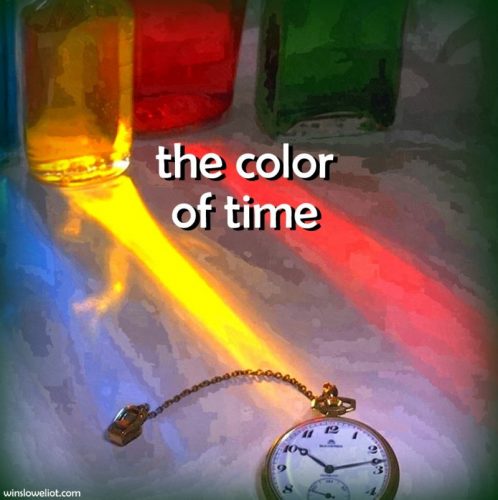
Stillness 6-18: I’ve always taken for granted my synesthesia. Synesthesia, typically regarded as a neurological disorder, is a condition that enables us to experience a sense, like sight, through the lens of another, like sound. The Ancient Greek root of the word means to “perceive together.” It might happen when we hear someone’s name and taste vanilla. Or we see a musical instrument and we sense cold or heat. We might hold a stone and hear a sound. Many artists, including Vincent Van Gogh, were synesthetes (Van Gogh describes hearing a musical note and seeing it as a color). The composer Messiaen, who was also a colored-hearing synesthete, describes seeing moving colors when he heard music and in his teaching he actually notated colors.
Growing up, I saw words as colors. When I heard the word “Thursday,” it showed up as a sort of dusty orange. When I heard the word for a number, like two, I saw a cheerful fire-engine red. As a writer, this made writing similes and creating metaphors easy. Don’t names of people always show up with a shimmering sort of color around them?
Although it’s considered a sort of neurological disorder or aberration, it seems to me that synesthesia is more like extra-sensory perception. I also see it as a tremendous gift, and especially beautiful since it is a gift we can all cultivate. Hearing what we see, touching what we hear, smelling a color, or tasting a word takes us into a whole new vibration of experience. Practicing interweaving and creating unusual correspondences between our senses expands our imagination and opens our heart to a world beyond our purely physical one. It deepens and enlivens all our experiences.
Here’s a practice with which to begin: start by noticing the time and correlate it with a color. What does two p.m. feel like? What about eight o’clock? It may feel forced at first, but after a while it will become more natural.
Then don’t limit yourself to colors. Play the metaphor game: If eleven o’clock were a taste, what would it taste like? If five o’clock were a touch, how would it feel? What does noon smell like? What is the shape of going to bed? If you touched a note of music how would it feel? If you tasted the flight of a bird, how would it taste? When you see a friend in your mind’s eye, what color are they? If you’re stuck, make it up. Surround them with a color. The more you activate your ability to combine your senses, the more natural it becomes in your daily life.
And, if you’re interested in exploring the realm of spirit, particularly mediumship and understanding what happens when we die, as I am, this practice is even more useful. When we die, we don’t have a brain or a body, but we do have Awareness and a continued sentient consciousness. The more we develop and transform the realm of our senses, the more natural that transition becomes. We can even learn to experience that Awareness while we are physically alive, which is what we do when we connect with people who have died. Everyone can do this—it just takes intention and practice.
Whatever you use it for, practice of intermingling and transforming the seeming limitations of your senses to be tremendously healing and freeing. Expand your awareness beyond your senses and their correlation to your brain. If you don’t, you’ll be stuck where you are, which is in a physical, constraining container. But your imagination is as limitless and unconstrained as you allow it to be! Practicing your innate synesthesia is a way not just to open yourself to spirit, but to remember who you really are: imaginative and free, beyond thinking, beyond analyzing, and even beyond physical sensation.
